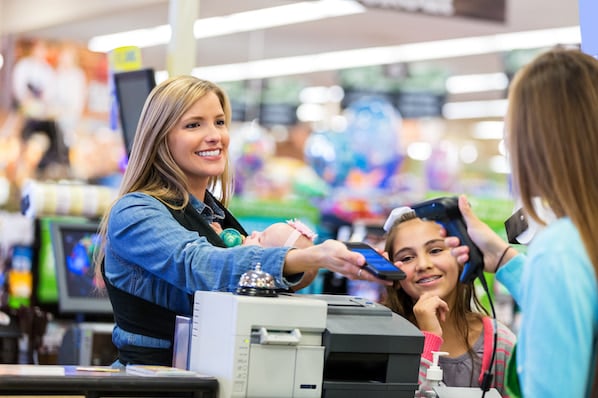The numbers don’t lie — the statistics regarding the benefits of repeat customers underscore the importance of prioritizing customer loyalty. In this guide, I’ll explain why you should put customer loyalty at the center of your strategy and how to create a robust customer loyalty program. To top it all off, I’ll review some inspirational examples of top-tier customer loyalty programs. Let’s go!
Table of Contents
What is customer loyalty?
Customer loyalty is the ongoing willingness of customers to return to a business to fulfill their needs, driven by consistently delightful and memorable experiences with the brand.
There are many reasons to promote customer loyalty, but the overall result is that loyal customers can help you grow your business faster than any traditional marketing or sales scheme. Let’s talk about some reasons why customer loyalty is so essential.
Why is customer loyalty important?
Customer loyalty is the cornerstone of a successful business. Attracting and retaining happy customers drives revenue, increases referrals, and strengthens your brand’s reputation. Simply put, customer loyalty is essential for long-term growth.
Cultivating customer loyalty is like creating fans. Loyal customers are your biggest supporters — they stay engaged, make repeat purchases, and help you attract new business.
As a bassist in a touring band, I can attest to the similarity. When we release a new album or announce a tour, we rely on our most loyal fans to pre-save our music, buy tickets in advance, and bring their friends and family to our shows. Loyal customers act the same way, except they usually don’t hold up homemade signs and ask you to sign their t-shirts (or maybe they do; I don’t know what kind of business you’re in!).
Loyal customers likely follow you on social media or subscribe to your newsletter to stay informed about new products or updates, another one of the many reasons they should be a crucial aspect of your marketing strategy. Your loyal customers are your built-in fan base; if you continually serve and delight them, they’ll return the favor. Check out the stats below:
- Higher Revenue. Loyal customers spend 31% more than new customers.
- Increased Retention. Acquiring a new customer can cost 5 to 25 times more than retaining an existing one. Focusing on customer loyalty ensures your customers stick around.
- Stronger Advocacy. Loyal customers are likely to recommend you to their family and friends, and 92% of consumers trust those recommendations over all other forms of advertising.
Customer Loyalty in Marketing
Building customer loyalty should be at the forefront of your brand’s marketing strategy. Loyal customers are happy customers who become brand ambassadors who enthusiastically advocate for your band. Customer loyalty also bolsters customer retention. These benefits don’t just happen by chance; they’re nurtured through consistent, delightful interactions across all your customer-facing channels.
Here are a few additional benefits customer loyalty marketing provides.
Increased Share-of-Wallet
Share-of-wallet refers to the amount of money a customer spends on a particular brand compared to competing brands. Customers spend more with the brands they are loyal to, which means more money for you. Yay!
Better Word-of-Mouth Referrals
Loyal customers will likely tell their friends, family, and colleagues about your brand, which drives word-of-mouth marketing, referral traffic, and revenue.
Increased Trust
Customer loyalty creates a foundation of trust between you and your customers. When customers know you’ll always have their back, they have no reason to defect to the competition. Fostering a sense of trust with your customers will result in increased customer retention, which is essential to sustained business growth.
Pro tip: Loyalty marketing campaigns that reward customers for referrals and social media engagement will likely maximize the above benefits.
As I mentioned, acquiring a new customer costs more than retaining an existing one. Accordingly, activating your loyal customers to recruit new ones should be exciting.
But how do you do it?
I’ll show you how you can turn happy, satisfied customers into brand evangelists who sing your praises on social media and IRL.
How to Keep Customers Loyal
- Be as generous as your customers.
- Show your gratitude.
- Provide benefits to your customers with every purchase.
- Go beyond traditional loyalty programs.
- Build a community for your customers.
- Communicate effectively with your customers.
- Improve upon your customer loyalty program.
- Continuously evolve your business over time.
1. Be as generous as your customers.
I’ll be honest: I’m a bit of a cynic regarding corporations in general. I tend to assume that customer loyalty programs are schemes to get me to part ways with my hard-earned dollars. That said, genuinely generous loyalty programs stand out to me.
For example, Sephora’s Beauty Insider program offers loyal customers points that can be redeemed for high-value beauty products — and I’m not talking about a couple of measly points in exchange for hundreds of dollars spent that’ll get you nothing more than a travel-sized lip balm. Beauty Insider offers loyal customers attractive promotions and a generous points system that puts high-quality, full-sized products into your hands sooner than you think.
Pro tip: Don’t cheap out on rewards. Your loyalty program isn’t the place to nickel and dime your customers. Offer them generous rewards that excite them to shop and tell their friends about the fantastic deals they are getting. If you feel like your customers are taking advantage of you a little bit through your loyalty program, that probably means you are doing it right.
2. Show your gratitude.
Beyond offering a loyalty program, points, and other benefits, you should recognize your loyal customers for their continued patronage. Showing gratitude to your customers is a win-win. It’ll make you and your customers feel good about spending with you.
I recently bought a guitar pedal from Walrus Audio. In the box, I received a free tin of picks, a sticker, and a Polaroid of the man who lovingly assembled my pedal. The personal touch and little freebies made me feel the gratitude that Walrus Audio has for me and all their customers, and for that reason, I’ll always have them at the top of my mind when I feel like parting ways with $100 instead of practicing.

Pro tip: Consider sending out personalized, handwritten “thank you” cards to your top customers around the holidays.
3. Provide benefits to your customers with every purchase.
Build loyalty by rewarding customers with each purchase. A common strategy is to use a point system where customers accrue one point per dollar spent and can redeem those points for discounts and exclusive items.
For example, myAbercrombie, Abercrombie & Fitch’s loyalty program, offers points with each purchase that are automatically redeemable for a $10 discount when you meet a specific point threshold.
Pro tip: Use a tiered rewards program that offers increasingly valuable benefits to motivate ongoing customer engagement.
4. Go beyond traditional loyalty programs.
Loyalty programs are increasingly common today, so one way to stand out is to skip them entirely. Keep in mind that this probably isn’t the best strategy for clothing or fast-casual restaurant brands, where customers expect a points-based rewards program. However, if you offer a unique, premium product or service, the inherent value and exceptional benefits alone can inspire customer loyalty.
Take Hermès, for example. They certainly do not have a loyalty program that allows you to redeem points for a free Birkin bag. The quality and exclusivity of their products speak for themselves. However, that doesn’t mean they neglect their most valued customers. Hermès’ biggest spenders get invited to exclusive events, early access to collections, and special gifts.
Pro tip: If your brand is rooted in exclusivity, exceptional quality, or premium service, consider focusing on personalized perks instead of traditional loyalty programs.
5. Build a community for your customers.
Customers trust their peers more than they trust businesses, and they will typically use social media, online forums, and review sites to research a company or discuss their experience with a product or service. You can take advantage of this phenomenon by creating a community that encourages customer-to-customer interactions.
One way to do this is with self-service support resources. If you have a knowledge base, you can add a community forum where customers can connect to troubleshoot issues and share service experiences. Even if customers leave negative feedback, I think the benefit of having your platform is that you are in complete control of responding, resolving issues, and turning that frustration into loyalty and trust.
The benefits of a community forum extend beyond support. For example, on the HubSpot Ideas Forum, customers can pitch ideas and upvote each other’s posts. If an idea resonates, our product team may consider developing it. If an idea is already possible within the platform, the support team can jump in to provide guidance.
Pro tip: As your community grows, it is essential to maintain fairness and organization with a formal moderation structure to keep participants satisfied.
6. Communicate effectively with your customers.
Effective and transparent communication is the backbone of customer loyalty and trust, and that goes double for customer service interactions. As a former support rep at HubSpot, I found that clear, empathetic communication made all the difference in gaining customer trust and turning difficult situations into trust-building opportunities and wins.
Good communication also means keeping customers informed about updates. This could include new products, features, hours, or even a heads-up that you’re getting a new logo and the app icon on their phone is about to look different. Proactive communication makes customers feel valued and considered.
Pro tip: Use all channels — email, social media, website banners, and SMS — to ensure your customers are never caught off guard.
7. Improve upon your customer loyalty program.
Your customer loyalty program isn’t a set-it-and-forget-it solution. To keep it engaging, continuously evaluate what’s working, listen to customer feedback, and revamp perks to align with customer needs and evolving trends.
Pro tip: Surprise customers with unexpected bonuses and gifts. For example, I randomly receive a 40% off coupon from CVS in my email. There’s no telling when one will arrive, but I’m always happy when it does.
8. Continuously evolve your business over time.
The market and consumer preferences are constantly changing, and it’s your responsibility to keep up. Keep relevant by evolving alongside your customers. Research trends, listen to customer feedback, and show your customers that you are committed to meeting their needs today and long into the future.
Evolving your company can mean many things. It may mean refining your branding and visuals, adding competitive new features to your products, or enhancing customer experiences to align with changing expectations. Whatever it is, customers can sense your commitment to continuous improvement to meet their needs, and they will reward you with their loyalty.
Pro tip: Don’t make changes to follow trends if they don’t help the customer. I don’t need my Chipotle app to be AI-powered.
Free Download: How Best-In-Class Companies Build Customer Loyalty
What is a customer loyalty program?
Companies provide customer loyalty programs to their most frequent customers to encourage loyalty and long-term business by offering free merchandise, rewards, coupons, or even advance-released products.
So, how do you ensure that your customer loyalty program benefits your business and customers? I’ll review the types of loyalty programs below.
How do loyalty programs work?
Marketing programs are often focused on attracting new customers. Customer acquisition is exciting, but customer retention is a different ball game. That’s where customer loyalty programs come in.
Loyalty programs give customers an incentive to continue doing business with you. The sky is the limit with the incentives you choose to entice your customers to stay, but your incentives should offer real value to your customers so they want to keep coming back.
Types of Customer Loyalty Programs
- Point-Based Loyalty Program
- Tiered Loyalty Program
- Paid Loyalty Program
- Value-Based Loyalty Program
- Coalition Loyalty Program
- Game-Based Loyalty Program
1. Point-Based Loyalty Program
Point-based loyalty programs are widespread. Frequent customers earn points that can be converted into rewards such as discount codes, freebies, and anything else you can think of.
Best for: Businesses with frequent, low-cost purchases like coffee shops, fast casual restaurants, and retail stores.
Example: Abercrombie and Fitch’s loyalty program is simple: $1 = 10 points, 2,500 points = $10 reward.
Pro tip: Don’t make the relationship between points and dollars weird and confusing. $1 = 1 point or $1 = 10 points makes a lot of sense.
2. Tiered Loyalty Program
Tiered loyalty programs typically also use a points-based system, but the difference is that customers can reach higher loyalty tiers as they spend more money. Customers who reach higher loyalty tiers unlock more exclusive benefits, encouraging ongoing engagement and repeat purchases. In addition, customers have a psychological incentive to reach higher, more exclusive tiers.
Best for: Businesses that offer high-value repeat purchases, like airlines, hotels, and luxury brands.
Example: Hyatt’s World of Hyatt loyalty program offers four loyalty tiers, unlocked after staying progressively more nights and accruing more points. Hyatt Globalists (the top tier) enjoy benefits like 4:00 PM checkout, free nights, bonus points, upgrades, and more.
3. Paid Loyalty Program
In a paid loyalty program, customers pay a membership fee in exchange for premium benefits. I immediately thought, “Why would anyone pay a fee just to buy from a company?” Then I realized I already did. I have Amazon Prime, which offers me free two-day shipping (among other benefits) in exchange for an annual fee.
Best for: This is a tough one. Many types of businesses can use a paid loyalty program. The key is to offer undeniable value. The benefits must be so compelling that customers feel the membership pays for itself.
4. Value-Based Loyalty Program
Instead of offering discounts and traditional perks, value-based loyalty programs tie rewards to the values of their target audience, typically through donations. This encourages customer loyalty from an emotional angle by making customers feel good about shopping with a company.
Best for: Companies with a clear mission statement that want to center their brand around specific values and charitable actions.

Example: Bombas donates one pair of socks for every sock purchased to help combat homelessness in the U.S. Did you know socks are the No. 1 most requested item at homeless shelters? This fact sparked the founders of Bombas to start their company in 2013 with the goal of donating 1,000,000 pairs of socks to those in need. Today, they’ve donated over 150 million essential clothing items to people who need them.
5. Coalition Loyalty Program
Coalition loyalty programs, or partnership programs, offer customers benefits across multiple brands. They are a collaborative rewards structure that depends on multiple companies working together to create a united loyalty program, which allows customers to earn and redeem points across a network of partnered brands.
Best for: Brands with complimentary customer bases.
Example: Canada’s Air Miles is an extensive coalition program with hundreds of partner brands. Air Miles members can earn points (miles) from these partners and redeem them for travel, entertainment, and much more.
Pro tip: Coalition programs aren’t super common in the U.S. However, that doesn’t mean you can’t explore partnering with other brands on a smaller scale. Let’s say you own a natural dog food brand; you might partner with a local groomer to offer a discounted puppy trim after spending a certain amount of dollars.
6. Game-Based Loyalty Program
Gamification of your loyalty program is introducing game dynamics — like points, levels, leaderboards, challenges, badges, and more — into the customer loyalty experience to increase engagement. Making interactions fun and rewarding is a great way to encourage active customer engagement.
Best for: Tech-savvy brands, companies targeting millennials and Gen Z who are familiar with gamified experiences, and brands seeking to craft community engagement.
Example: Nike Run Club gamifies the fitness experience by allowing users to set goals, compete with friends, earn badges, and track progress, all while keeping users engaged with the brand.
How to End a Loyalty Program
Loyalty programs and their benefits should be refreshed and updated every so often. However, it’s important to avoid ending these programs in a way that will upset customers. Setting a time limit at the program’s start and reminding customers as the end date approaches can help. Additionally, a small gift or one-time bonus at the program’s end can help soften the blow of losing benefits and leave customers with a good feeling.
Now that you have some ideas for your new customer loyalty program or how to enhance the program you already offer, I’ll show you how to reliably measure success.
How to Measure Customer Loyalty
- Customer Retention Rate
- Negative Churn
- Net Promoter Score®
- Customer Effort Score
- Purchase Habits
- Referral Traffic
- Social Media Mentions
As with any initiative you implement, you should have some way to measure success. Customer loyalty programs should increase customer delight, happiness, and retention — and there are ways to measure these things (aside from rainbows, sunshine, and smiles).
Different companies and programs require unique analytics, but I’ll highlight a few of the most common metrics companies monitor when rolling out loyalty programs.
1. Customer Retention Rate
Customer retention is an indication of how long customers stay with you. With a successful loyalty program, this number should increase as loyalty program members grow. According to The Loyalty Effect, a 5% increase in customer retention can lead to a 25% to 100% increase in profit for your company.
I recommend running an A/B test against program members and non-program customers to determine the overall effectiveness of your loyalty initiative.
Discover everything you need to start running effective split tests with this complete A/B testing kit.
2. Negative Churn
Customer churn is the rate at which customers leave your company. Negative churn measures customers who do the opposite — they upgrade or purchase additional services.
These help offset the natural churn that occurs in most businesses. Depending on the nature of your business and loyalty program, especially if you opt for a tiered loyalty program, this is an important metric to track.
3. Net Promoter Score®
NPS® is a customer satisfaction metric that measures, on a scale of 1-10, the degree to which people would recommend your company to others.
NPS is calculated by subtracting the percentage of detractors (customers who would not recommend your product) from the percentage of promoters (customers who would recommend you).
The fewer detractors, the better. Improving your net promoter score is one way to establish benchmarks, measure customer loyalty over time, and calculate the effects of your loyalty program.
Pro tip: Use charts to plot out your NPS score over time and use that information to pinpoint bottlenecks and areas that need improvement.
4. Customer Effort Score
The Customer Effort Score (CES) measures how easy or difficult it is for customers to interact with your business, such as making purchases or resolving support issues.
I prefer this metric over NPS because it measures the customer’s actual experience instead of their emotional delight (which is also important).
Why it’s important: A low customer effort score translates to higher satisfaction and loyalty levels.
Pro tip: Focus on the parts of the customer journey with the highest CES score. This information will help you determine which processes to streamline and simplify, such as checkout processes and support inquiry submissions.
5. Purchase Habits
Purchasing habits include metrics like:
- The time customers take between making repeat purchases.
- The rate at which customers return to buy from you again (repeat purchase rate).
- How many customers return products after purchase.
These purchase habits let you know whether customers are loyal to your brand — or whether they’re leaving you for your competitors.
It’s essential to understand what, if anything, is causing a return or delaying a repeat purchase. Accordingly, I recommend sending out customer satisfaction surveys quarterly and in direct response to new purchases and returns.
Pro tip: Encourage repeat purchases by using personalized email follow-ups, product recommendations, and limited-time offers in response to previous purchasing behavior.
6. Referral Traffic
Referral traffic refers to any website traffic from sources other than search engines. Social media sites, news websites, and other online properties count as referral traffic. I suggest using a tool like Google Analytics to measure how often your customers share links to your website or talk about you on social media, which is an excellent indicator of customer loyalty.
Pro tip: Traffic from display ads doesn’t count toward referral traffic.
7. Social Media Mentions
What are people saying about you on social media? Are they singing your praises and recommending your products to their friends, or are they venting about negative service experiences?
Tracking mentions is an integral part of a social listening strategy and one of the best ways to gauge customer loyalty. Using social monitoring strategies, you can discover what your customers say and how it compares to the competition, which can reveal loyalty and areas that need improvement.
In addition, emerging AI-powered sentiment analysis tools can automatically analyze swaths of mentions and social listening data to provide a distilled analysis of overarching customer opinion on your brand.
Pro tip: Use social media management and listening tools like HubSpot to keep track of all your mentions.
I’ve compiled some customer loyalty program examples to inspire your loyalty program. Let’s check it out.
1. Sephora Beauty Insider
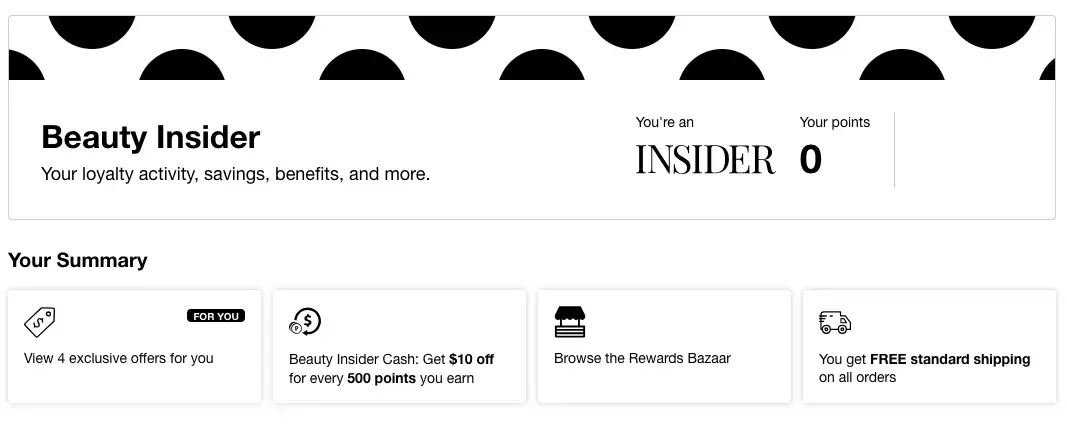
Sephora offers a points-based loyalty program. For every dollar spent, customers receive valuable points that can be redeemed for cash discounts and various other perks.
Depending on their average purchase threshold, customers are grouped into one of three Beauty Insider Tiers (Insider, VIB, and Rouge), offering progressively greater rewards.
Why I Love It
I love the free samples! I love trying before I buy, especially for skincare products. I also love that all Beauty Insider members receive free shipping with no minimum purchase required.
2. Virgin Atlantic Flying Club

The Virgin Atlantic Flying Club allows you to earn Miles and Tier Points by flying and making daily purchases, which you can apply to future travels.
Flying Club customers are grouped into three tiers (Red, Silver, and Gold), each offering progressively more significant benefits. Members of higher tiers receive more Virgin points per flight, offering an attractive loyalty incentive.
Why I Love It
I love the Household account feature, which allows you to create a single account for your entire family to keep track of and pool points easily.
3. Amazon Prime
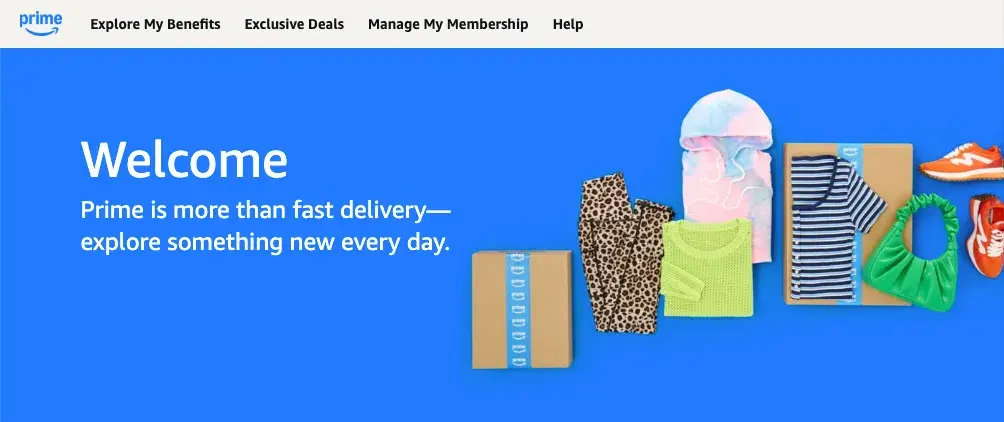
Amazon Prime is a rare breed. Millions of people happily fork over $139/year to purchase from a website they could use without a fee. Why? Because the benefits are unbelievable. Everyone knows about the free two-day delivery, but there are many other benefits like one-day delivery, access to Prime Video for streaming, member-only discounts at Amazon-owned Whole Foods Market, and much more.
Why I Love It
The savings and convenience of Amazon Prime are worth it, which is rare for something that costs $139/year on top of the money I spend to buy things. Amazon Prime also has tons of discounts for certain age groups and demographics, and gives me free access to Grubhub+, which is fantastic because the $0 delivery fee helps me justify having Thai food delivered instead of cooking.
4. TOMS Rewards
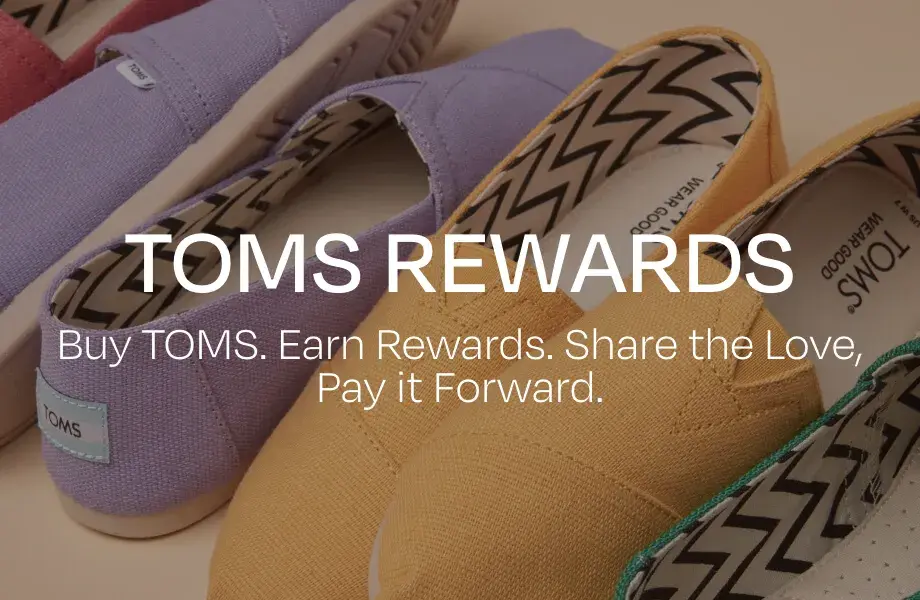
TOMS Rewards is a classic points-based rewards program with three membership tiers, redeemable perks, and discounts. But what truly sets it apart is its philanthropic focus. TOMS customers can redeem their points not just as products or discounts, but also as donations towards critical causes like mental health resources for BIPOC, LGBTQ+, and Women & Girls.
Incorporating a values-based loyalty system supports TOMS’ brand identity as a socially conscious company and allows customers to turn regular purchases into social impact.
Why I Love It
I love that the TOMS loyalty program gives customers a reason to feel good about shopping with them. Giving customers the option to donate to causes they are passionate about is a powerful loyalty driver that also makes a difference.
5. World of Hyatt
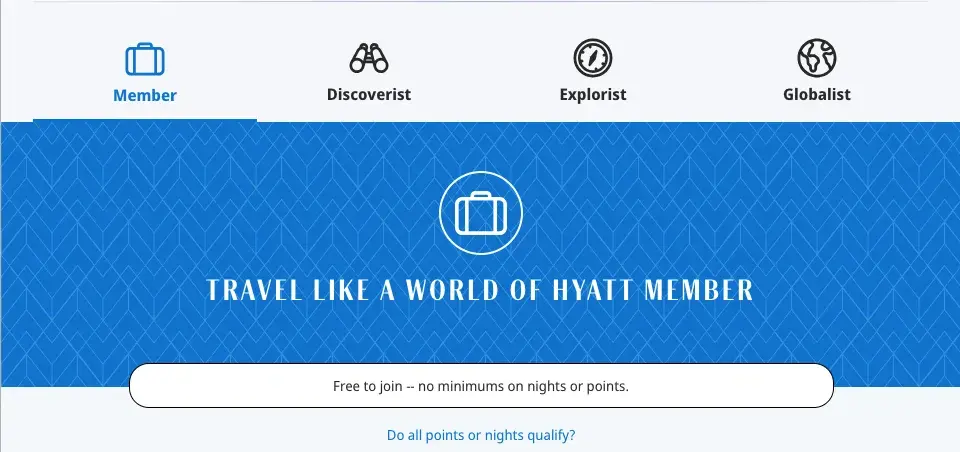
World of Hyatt is Hyatt’s loyalty program, offering four distinct tiers that reward customers based on the number of base points earned or nights stayed at Hyatt properties. Hyatt Globalist, the highest tier, requires significant travel (60 nights) but comes with exceptional perks like free nights, waived resort fees, elite check-in, and room upgrades. Despite the high bar for top status, World of Hyatt remains accessible to everyone, including a free, entry-level membership tier without points or nights requirements.
Why I Love It
Remember when I said there were four membership tiers? I lied, kind of. There is an exclusive 5th tier: Lifetime Globalist. This elite status is achievable only after accruing 1,000,000 lifetime base points. Once customers reach the highest echelon of the World of Hyatt loyalty program, they no longer need to worry about maintaining their membership status each year. They are Globalists for life.
6. REI Co-op
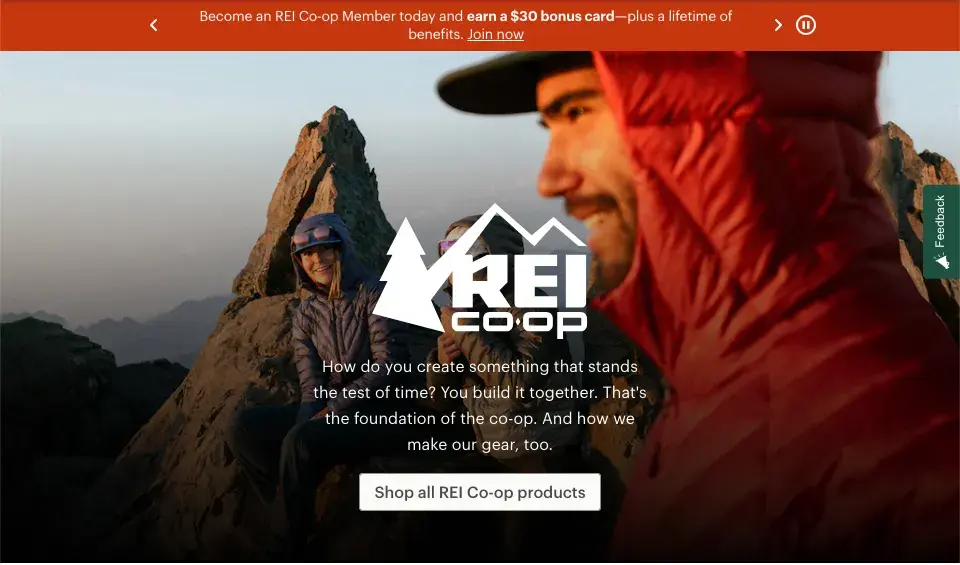
REI (Recreational Equipment, Inc.) is a truly unique company. Unlike traditional corporations owned by investors and shareholders, REI operates as a consumer cooperative (co-op), meaning its members own it. This structure ensures customer loyalty by prioritizing members over profits.
You can think of REI’s membership as a fee-based loyalty program, but it’s more than that. For a one-time fee of $30, you can become a member of the REI Co-op and enjoy a range of perks. These include 10% back on eligible purchases in the form of an annual dividend, discounted shop services, and access to the REI Garage Sale — a members-only event with deep discounts on returned items.
Why I Love It
I love that REI empowers its customers by allowing them to become part owners in the business. With this corporate structure, I am confident that REI will prioritize member benefits over profits. In addition, I love REI’s deep commitment to sustainability, conservation efforts, outdoor education, and advocacy for public lands. It’s easy to see how REI fosters customer loyalty with unique benefits and a mission-driven outlook.
7. United MileagePlus

United’s MileagePlus Program allows members to earn points on everyday purchases and apply them to flights, hotels, rental cars, and more.
United’s loyalty program offers four tiers with attractive benefits at each level. United Premier 1k, the top tier, has excellent benefits like 11 miles per dollar, three free checked bags, and free upgrades 96 hours before takeoff.
United also offers benefits through partnerships with other companies, such as Mariott Bonvoy, Avis, and Clear, so that members can turn their travel experience into a points-earning extravaganza.
Why I Love It
I grew up in New Jersey and always flew out of Newark Airport (EWR) for family vacations. EWR is a United hub, so I’m a loyal MileagePlus member. In addition, United flies to more international destinations than any other airline, which gives members yet another reason to remain loyal.
8. Chipotle Rewards
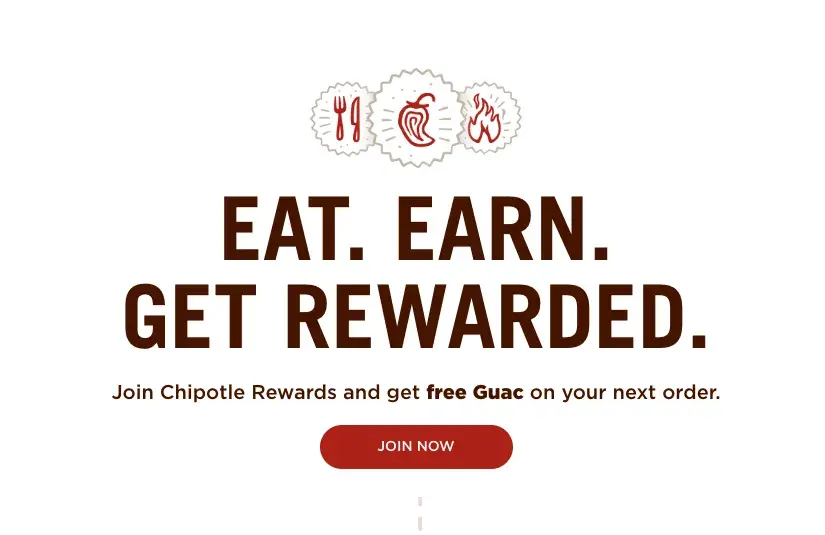
Chipotle offers a points-based loyalty program where members can exchange points for free food. If you like Chipotle, joining the rewards program is a no-brainer. $1 = 10 points, and you can redeem those points for chips, guac, drinks, double protein, etc. Once you hit 1,675 points, congrats — you’ve got yourself a free burrito. Not too shabby.
If you’re feeling generous, Chipotle also lets you donate your points to non-profits like The Farmlink Project, National Young Farmers Coalition, and National Urban League. I just discovered this while writing the article, and now I’m facing a moral quandary about what to do with my 1,415 Chipotle points.
Why I Love It
I love how straightforward Chipotle’s loyalty program is. Spend money at Chipotle, get free Chipotle. It’s simple. In addition, I’m a fan of the Chipotle app. It’s easy to use, great for placing mobile orders, and useful for keeping track of rewards. They also give me free food on my birthday.
9. Starbucks Rewards
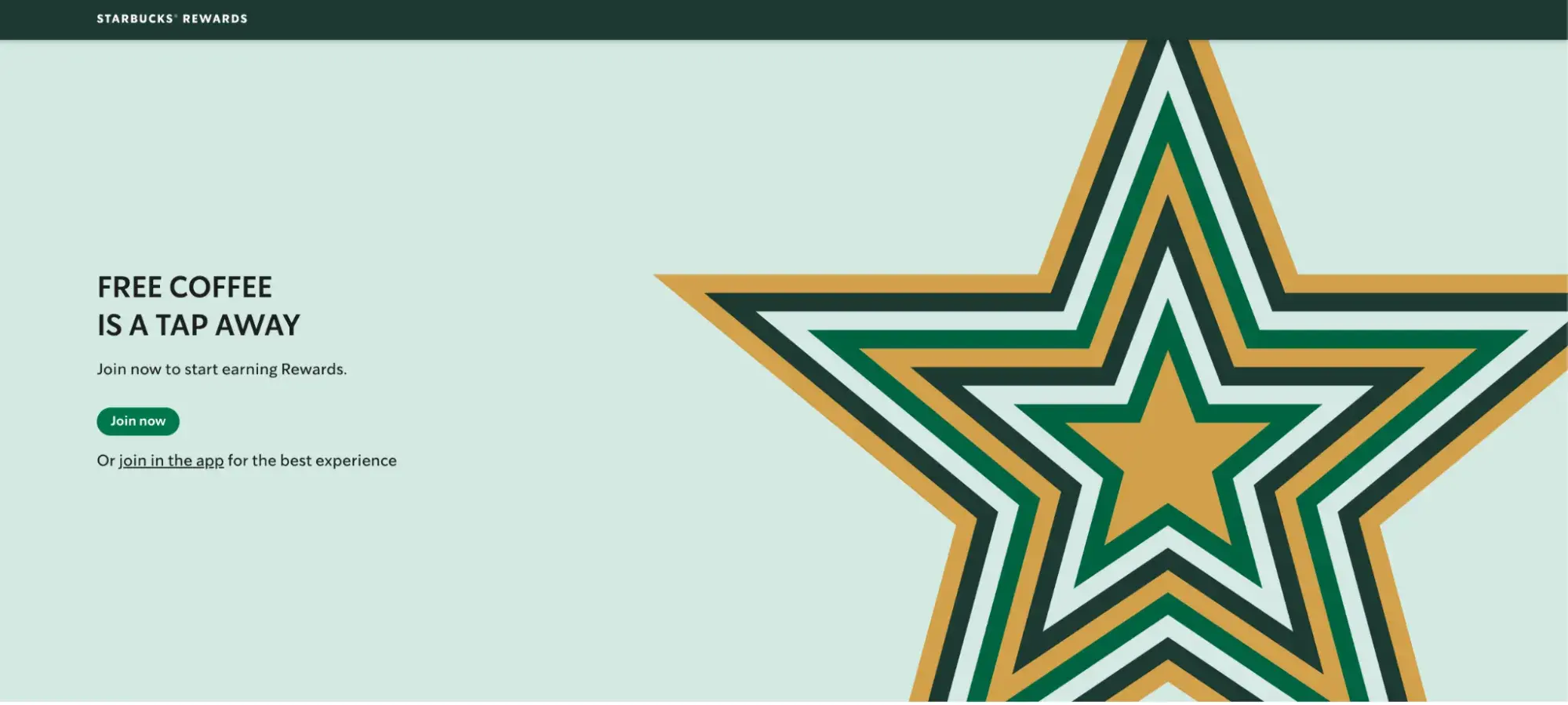
Starbucks Rewards is a points-based loyalty rewards program, but instead of points, it’s stars — a nice touch, in my opinion. Every dollar spent at Starbucks yields one star, which can be redeemed for complimentary beverages and food items.
Starbucks loyalty members can double their stars by loading money directly onto the Starbucks mobile app and using that to pay in-store or place mobile orders. If you pay with the money loaded into the Starbucks app, $1 = 2 stars, a powerful incentive for customers to immerse themselves in the loyalty program. I’ve found myself loading $25 into the Starbucks app to buy one coffee and take advantage of double rewards, making it much easier to visit Starbucks the next time. They got me!
Why We Love It
The Starbucks Rewards program makes it fun and exciting to earn rewards through games, bonus challenges, and double-star days.
10. Chewy+

As a proud owner of the sweetest little boy in the world (see below), I am a big fan of Chewy+. For $49/year, I enjoy benefits, including free shipping, 24/7 customer service, rotating discounts, double rewards, freebies, and more.

Combined with their Autoship & Save program — which gives me a 5% discount on recurring orders for essentials like food and treats — I’m constantly accruing reward points with modern convenience.
Why I Love It
Chewy+ makes stocking up on pet supplies convenient and rewarding. Since there are so many products I need to buy regularly, it’s a no-brainer to get rewarded for it. Plus, I love the surprise treats and toys that occasionally appear in my orders.
11. Sweetgreen Rewards & Challenges

Sweetgreen gamifies the salad experience with rewards and challenges that let customers earn freebies and discounts by ordering through the Sweetgreen app. Customers must use the Sweetgreen app and opt-in for the weekly rotating challenges to be eligible for rewards. That might seem like an unnecessary hurdle to some, but I think it’s a brilliant way to boost app engagement (and sales) by incentivizing customers to check in on new rewards every week.
Why I Love It
I will happily take any opportunity to order food through an app instead of in person. Is it social anxiety? Yes — but I also just think apps are neat. Sweetgreen’s app is sleek and easy to use, making healthy lunch choices easier with compelling rewards.
12. Nike Membership
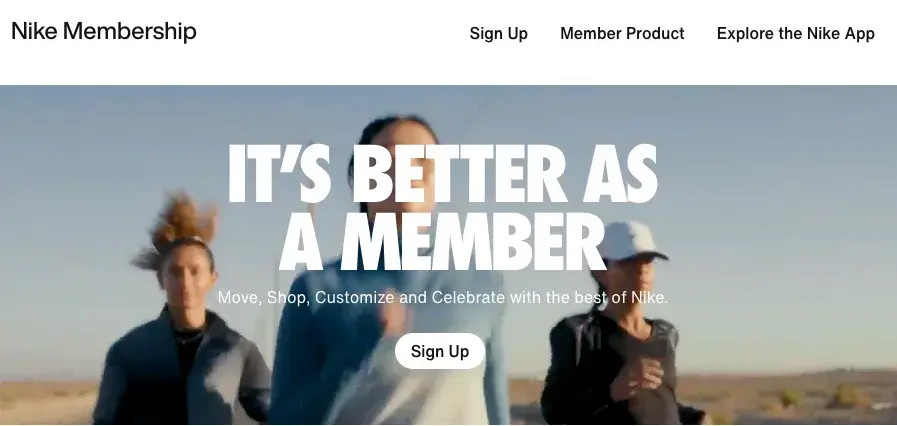
Nike offers a fresh take on a loyalty program with its Nike Membership. Instead of a traditional point-based loyalty program, Nike aims to create an exclusive club with members-only events and access to exclusive members-only products. For sneakerheads, members can access the SNKRS app, which keeps you updated on upcoming sneaker drops and events.
Why I Love It
By emphasizing experiences over transactions, the Nike Membership creates a loyal community around its brand. I think Nike’s approach to customer loyalty is modern and refreshing. Any company can use a points system and offer discounts, but fostering customer loyalty through exclusivity and personalized experiences is an impressive feat reserved for only the most impactful brands.
13. The North Face XPLR Pass

North Face’s XPLR Pass is a classic free loyalty program that offers customers 1 point per dollar spent with the classic outdoor apparel brand. Every 100 points earns you a $10 reward, which is pretty nice. I like that XPLR pass members can earn points through more than just spending, though. North Face offers points for bringing in a reusable bag when shopping in-store, checking in at National Parks using their mobile app, and referring friends.
XPLR Pass members get free shipping on all orders, birthday gifts, and exclusive gear. There is also a generous return policy that XPLR Pass members can test out their gear in the field and return it, no questions asked, which is essential for outdoorsy hiking gear that needs to perform out in Mother Nature.
Why I Love It
I love that the XPLR pass encourages members to support North Face’s commitment to sustainable practices and reducing environmental impact. These values are echoed through initiatives like their Renewed Trade-In program that lets members exchange lightly used gear for rewards, encouraging a reuse and waste reduction cycle.
14. Blackbird

Blackbird is a cryptocurrency-based loyalty app that helps independent restaurants identify and reward their most loyal customers. Diners can check in to Blackbird partner restaurants through the app or by tapping their phones on a Blackbird “puck” at the host stand or register.

With Blackbird Pay, customers can quickly settle bills on their phones, earning them $FLY — a universal rewards cryptocurrency that can be redeemed for rewards at partner restaurants.
As for rewards, each restaurant works with Blackbird to set up their own bespoke rewards program. Customers can unlock perks like free drinks, free food, invites to exclusive events, menu tastings, and whatever else restaurants can imagine.
Why I Love It
Every great restaurant has its regulars, but Blackbird lets those restaurants identify and reward regulars by more than just their faces. By tracking individual diners’ preferences and spending patterns, Blackbird empowers restaurants to foster customer engagement and loyalty in a way previously inaccessible to small, independent restaurants. I find Blackbird to be an exciting shake-up to the conventional loyalty program model, and I’m excited to find participating restaurants in my neighborhood to start earning $FLY.
Begin (or Enhance) Your Customer Loyalty Program
Customer loyalty is directly tied to your business’s bottom line, retention, and ability to grow, and working on this piece has driven that point home for me. When digging into the different loyalty program examples, I discovered that I’m a bit of a rewards junkie myself. I signed up for every loyalty program listed above, and I’m excited to start earning points and getting free stuff, which underscores the value of implementing loyalty programs.
I also found it interesting that customer loyalty isn’t just a logical decision. It can be deeply emotional as well. From a rational perspective, I don’t consider myself a loyal Chipotle customer. I just use their app to nab discounts and deals. Still, the net effect is my loyalty through repeat purchases. On the other hand, brands like REI connect with customers on an emotional level by embedding values like sustainability into their loyalty programs.
To me, value is the backbone of customer loyalty. When you provide customers with a product or service that meets real needs at a fair price, customers will reward you with their business. However, retaining those customers over the long term is an art and a science. Loyalty programs help create emotional connections that make customers feel good about returning.
Although the points-based models for customer loyalty are widespread and proven, I believe there’s always room for fresh and innovative approaches toward driving engagement, getting repeat sales, and rewarding your biggest supporters.
So, how will you implement what you’ve learned to boost customer loyalty? Good luck on your customer loyalty journey. And remember, the [loyal] customer is always right!
(Net Promoter, Net Promoter System, Net Promoter Score, NPS and the NPS-related emoticons are registered trademarks of Bain & Company, Inc., Fred Reichheld and Satmetrix Systems, Inc.)
Editor's note: This article was originally published in September 2019 and has since been updated for comprehensiveness.
Customer Loyalty


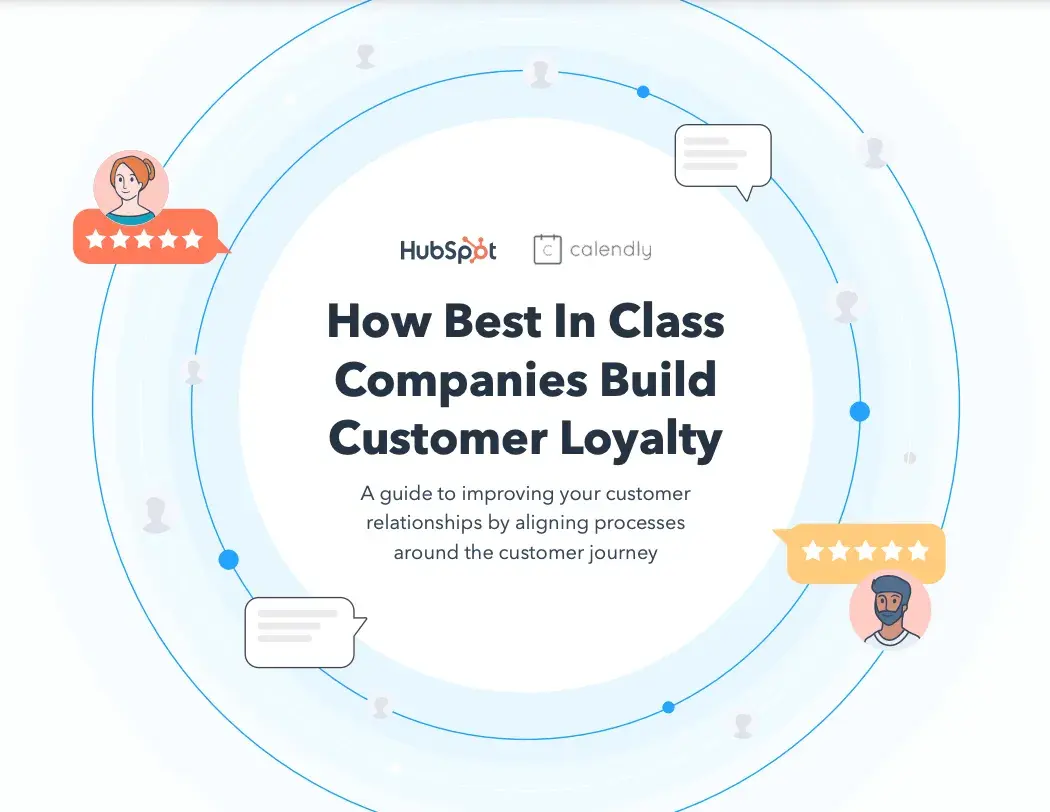

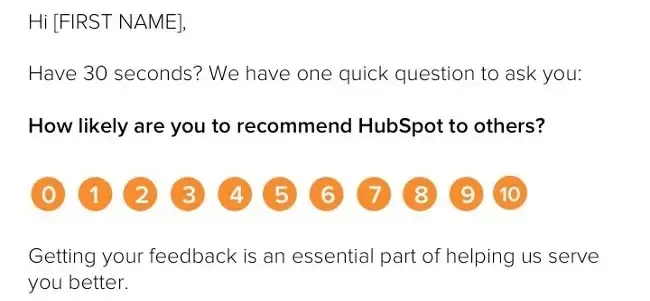

-4.png)


-1.webp)


![How & Why Loyalty Punch Cards Attract Customers to Your Brand [+ Examples]](https://53.fs1.hubspotusercontent-na1.net/hubfs/53/customer-loyalty-punch-card_6.webp)

